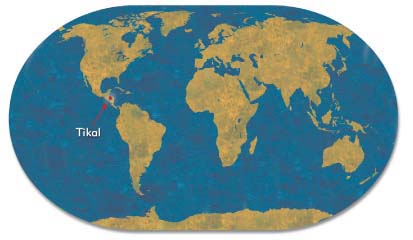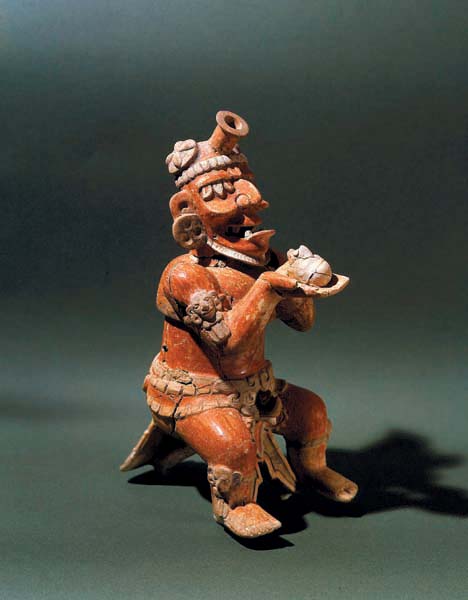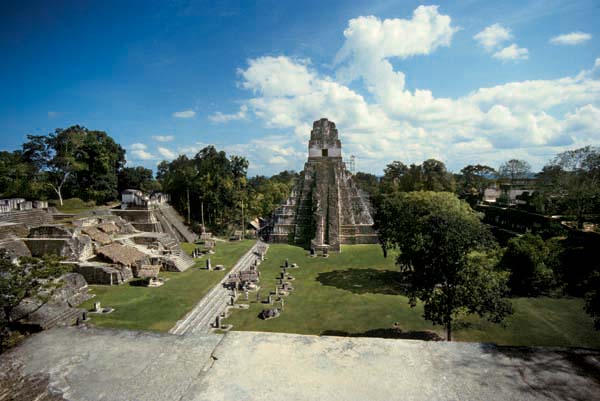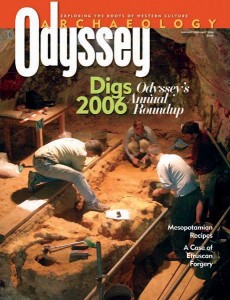Horizons: Tikal
Death in Life, Life in Death
For the Maya, time was a succession of cycles, spinning on and on to the end.

Since the mid-19th century, ancient Maya ruins have been well known, but only recently have we begun to know the Maya.

Although the earliest Maya settlements date around 1000 B.C., Maya civilization did not come into full bloom until about 250 A.D., when large population centers began to appear throughout northern Central America and southern Mexico—in the heart of the jungle.

Until the decipherment of Maya hieroglyphics, beginning in the 1970s, the Maya were widely considered a peaceful, childlike people—contentedly agrarian, artistic, enchanted with nature and the heavens. The hieroglyphic texts, however, tell a different story; often carved on stelae, these texts are devoted to the reigns of the kings who erected them, especially their conquests. According to Yale University scholar Michael Coe, the texts indicate that the Maya were not so much “peaceful theocracies led by priest-astronomers” as “highly warlike city-states led by grim dynasts obsessed with human sacrifice and the ritual letting of their own blood.”
Already a library member? Log in here.
Institution user? Log in with your IP address.

